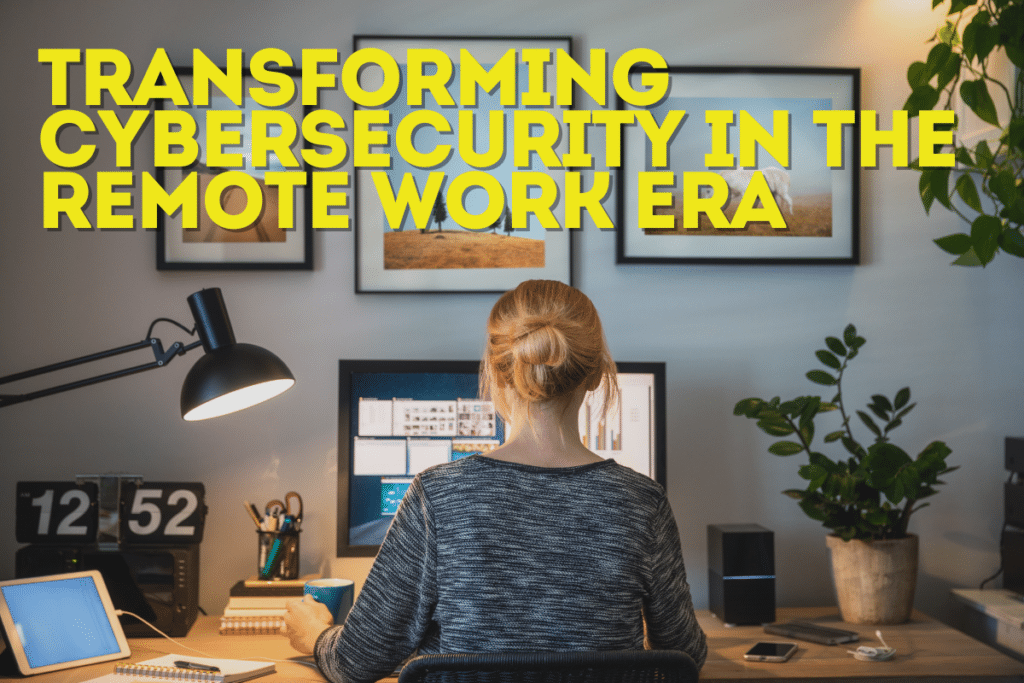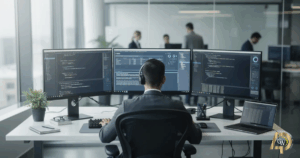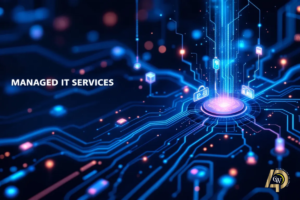Transforming Cybersecurity in the Remote Work Era: How MSPs Safeguard Your Business

The shift to remote work has transformed how businesses operate, offering flexibility and new opportunities. However, it also introduces significant cybersecurity challenges. As companies increasingly rely on digital tools and remote access, they become more vulnerable to cyber threats. Managed Service Providers (MSPs) play a critical role in safeguarding these businesses, ensuring that their networks and data remain secure in this new environment.
The Rising Importance of Cybersecurity in Remote Work
Remote work has blurred the lines between personal and professional environments, creating a fertile ground for cybercriminals. Home networks, personal devices, and unsecured Wi-Fi connections are just some of the weak points that can be exploited. Moreover, the increase in phishing attacks, ransomware, and other cyber threats has made it clear that traditional security measures are no longer sufficient.
Businesses now face the challenge of protecting sensitive information across a distributed workforce. The risks are not only technical but also human, as employees may lack the cybersecurity awareness needed to recognize and avoid potential threats. The consequences of a security breach can be severe, ranging from financial losses to reputational damage. This is where MSPs come in, offering expertise and resources to help businesses navigate these challenges.
Strategies for MSPs to Secure Remote Work Environments
Implement Multi-Factor Authentication (MFA):
MFA is one of the most effective ways to prevent unauthorized access to systems and data. By requiring multiple forms of verification, MSPs can ensure that even if a password is compromised, the attacker cannot easily gain access.
Deploy Endpoint Protection:
With employees accessing company networks from various devices, it’s crucial to secure each endpoint. MSPs should deploy comprehensive endpoint protection solutions that include antivirus, anti-malware, and firewall capabilities to protect against threats.
Conduct Regular Security Assessments:
Continuous monitoring and regular security assessments are vital to identify vulnerabilities before they can be exploited. MSPs should perform penetration testing, vulnerability scanning, and audits to ensure that security measures are up-to-date and effective.
Educate Employees on Cybersecurity Best Practices:
Human error is often the weakest link in cybersecurity. MSPs should provide regular training sessions to educate employees on recognizing phishing attempts, creating strong passwords, and safely handling sensitive information.
Ensure Secure Remote Access:
Virtual Private Networks (VPNs) and secure remote access solutions are essential for protecting data in transit. MSPs should implement and manage VPNs that encrypt data, ensuring that it cannot be intercepted by malicious actors.
Backup Data Regularly:
Data backups are a crucial part of any cybersecurity strategy. MSPs should ensure that their clients’ data is backed up regularly and stored securely. In the event of a ransomware attack or data loss, having reliable backups can be the difference between recovery and disaster.
Implement Zero Trust Architecture:
Zero Trust is a security framework that requires verification for every person and device trying to access the network, regardless of whether they are inside or outside the network perimeter. MSPs can adopt this approach to minimize the risk of internal threats and unauthorized access.
Monitor and Respond to Threats in Real-Time:
Cyber threats are constantly evolving, so real-time monitoring is essential. MSPs should use advanced threat detection tools and have an incident response plan in place to quickly address and mitigate any security incidents.
In the age of remote work, cybersecurity is no longer a luxury but a necessity. As businesses continue to embrace remote and hybrid work models, the role of MSPs in providing robust security solutions has never been more critical. By implementing these strategies, MSPs can help their clients stay protected, ensuring that their data and networks remain secure against the ever-present threat of cyberattacks.
With the right approach, MSPs can turn cybersecurity from a potential vulnerability into a strong point, enabling businesses to thrive in the new normal of remote work.
Stay Protected with C&W Technologies
At C&W Technologies, we understand the unique challenges that businesses face in today’s remote work environment. Our company of cybersecurity experts is dedicated to providing comprehensive solutions that safeguard your data and networks, ensuring that your business remains resilient against cyber threats.
Whether you’re looking to strengthen your current security measures or need a full assessment of your remote work infrastructure, we’re here to help. Our tailored services are designed to meet your needs, offering peace of mind in an increasingly complex digital landscape.
Get in Touch Today!
Don’t leave your cybersecurity to chance. Contact C&W Technologies to learn how we can protect your business and keep your operations running smoothly, no matter where your team is working. Contact us for a consultation and discover how we can help you stay secure in the age of remote work.


Local IT Partner: Better Services for Stuart Businesses

IT Services – Scaling Your Stuart Business Strategically and Paving the Way for Growth

Small Business IT Support – Why Proactive IT Support is a Game Changer for Stuart’s Small Businesses

IT Support Stuart FL – When Is It Time to Outsource Your IT?

4 Compelling Reasons to Utilize Managed IT Services in Florida for Your Business Growth

40 Years of C&W: Our Story, Our People, Our Future as an Experienced IT Company
Hello world!

IT Helpdesk for Small to Medium Sized Businesses

8 Common IT Problems Solved by Managed IT Services
Frequently Asked Questions (FAQs)
1. What are the main challenges of working remotely in a remote environment?
Working remotely in a remote environment can present several challenges, including difficulties with communication and collaboration among remote teams. It can also cause feelings of isolation compared to in-person meetings with in-office counterparts, impacting the overall well-being and job satisfaction of remote employees.
2. How can I stay connected with remote workers?
To maintain strong connections with remote workers, consider scheduling regular video calls and virtual team-building activities. Encouraging open lines of communication helps foster a sense of community, which is crucial for remote teams aiming to enhance their professional lives.
3. What are some tips for creating an effective work setup at home?
An effective work setup for remote workers includes a dedicated workspace, ergonomic furniture, and minimal distractions. Establishing a routine can also aid in separating work from personal life, contributing to increased productivity while working remotely.
4. How can employers support the well-being of remote employees?
Employers can support remote employees by promoting a healthy work-life balance, offering resources for mental health, and providing tools for seamless communication. Regular check-ins can ensure remote workers feel valued and connected to their teams.
5. Can remote working lead to increased productivity?
Yes, remote working can lead to increased productivity for many remote employees. With fewer office distractions, the flexibility to create a personalized work environment, and the ability to manage their schedules, many find they are more focused and efficient in their work.
6. How can we blend remote and in-office work effectively?
To blend remote and in-office work effectively, companies should establish clear policies and tools that facilitate collaboration between remote employees and their in-office counterparts. Utilizing technology for video calls and creating shared documents can bridge the gap and enhance teamwork across different work setups.

